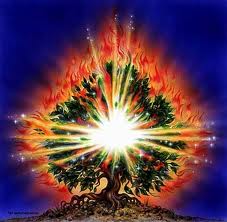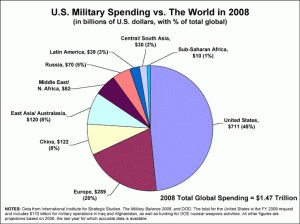
By: R. W. K.
In the middle of a village a man wakes up, disturbed by a nightmare of a murdering lion who roams the city after dusk, hunting for fresh meat. The man, disoriented, confused, lost, ponders the meaning of the dream. There were no lions, there hadn’t been for ages, why had the dream worried him so much? He goes through his day, somewhat off from his usual self; he has been having the dreams for weeks. After the next night of the dream repeating he has had enough and decides to visit his local shaman. A shaman is a man who treats and heals villagers, often for purely psychological afflictions. The shaman knows that these disturbances are mere apparitions of the mind, the panic and fear of a tormented psyche. The shaman prescribes a remedy to the man and tells him to come back in a month if the dreams persist. The man accepts, pays him, and is on his way.
The story above with its ancient language is actually a description of a modern event. A friend of mine had terrible dreams of a vicious lion that chased him throughout the night. If you read carefully, I never gave any evidence for a time period. Substitute the word shaman for psychologist and you have a description of a modern day occurrence. The fact is throughout history we have been using drugs to treat a number of ailments from anxiety, depression, and obsession to colds, pneumonia and mal health. Yet, in contemporary culture we have developed a bias towards drugs, in fact even the name “drug” has carried with it a negative connotation. We have lost the connection with ancient, natural remedies and resorted entirely to new medications,: chemicals which are not only dangerous but possibly the downfall of our species.
In this particular article I am going to discuss drugs, particularly “recreational” drugs from a non-recreational standpoint. More specifically, I am going to talk about psychedelic drugs and the ways they have been used in history, modern culture and the way they have been misrepresented. The intention of this conversation is to better understand the ways psychedelics can and have been used to facilitate profound psychological change.
Back to the story above, most readers will find it primitive and out dated; yet, it is still exactly what we do today. The difference is that the terminology and drugs have changed. Instead of using plants and substances that the human body has an age-old relationship with to treat problems, we now rely on medications that are under tested, synthetic and marketed to feed drugs companies for top dollar. This anomaly is not only unaccountable (there is little research down on psychedelic compounds) but irrational considering the amount of evidence that is accounted for.
In the 1960’s when psychedelic research was taking place there was an experiment done called the Good Friday Experiment. Scientists provided three sized doses of psilocybin to individuals attending a religious service on Good Friday. One test group was a placebo. The findings are extraordinary: 80% of participants whom ingested psilocybin during the service experienced a profound religious experience they described as life changing. The impact “stuck” for roughly six months. This is no surprise. After all, shamans have been performing similar diagnostic treatments for over 2000 years in the Amazonian Basin and other regions throughout the world. What is a surprise is our reluctance to accept the data. Something is happening when people ingest that substance and that substance is improving lives. Regardless if psilocybin is healthy to ingest on a regular basis (that is a question for medical research) the fact that we can experience such a marked positive shift in such a short period (six hours roughly) that lasts for so long (approximately six months) is at least noteworthy. Secondly, this seems to be a better strategy than pumping foreign chemicals through the body on a regular basis (i.e. prozac, lithium etc.) My hunch is that the same effects can be achieved with depression.
The value of full psychological transformation is irreducible. In this case we are talking about relatively bored non-religious people becoming ecstatically spiritual within six hours for about 6 months is something to look at. If we can tailor a transformation so profound, why aren’t we? The most important part about this study is not whether god exists but that in some way religious belief improves life on behalf of the participants and that we can create an experience of reality that supports this belief with a natural substance. Nothing has ever struck me as more spiritual than this.
There are certain political interferences that have prevented the integration of these findings into practice. The 1960’s countercultures usage of drugs was a representation of the positive effects psychedelics can have although without the research or controlled study it proved to be short lived. People dropped acid with little understanding of how to guide a session. Also, the entanglement with political resistance provided the government with an easy target to persecute and prevent disobedience: drugs. They couldn’t arrest them for protesting and organizing but every hippy had LSD in their pocket and that was something they could criminalize. That seems to be the tactic. Outlaw to drugs in order to calm the masses. Still, psychedelic research could be reopened and our ancient roots and spiritualities rediscovered.
Dimethyltrytamine (DMT) is a naturally occurring substance in the brain and also a central ingredient in the South American brew, Ayahuasca. It is known to be the most potent psychedelic compound and is released at birth and death. It is structurally similar to seretonin and it also aids the body’s ability to absorb and use natural seretonin (mood enhancing properties). Shamans in the basin have been using it longer than caffeine. All of those people seem fine. Why is it that a substance within our brain has become illegal? How is that even possible? We are inevitably in possession of it. Furthermore, psilocybin is structurally very similar — 4-HO-DMT. Essentially, it is a DMT structure with 4 hydroxyls attached. These substances are very similar to chemicals within the brain and do not appear to be damaging when used correctly (as all medicines should be…we wouldn’t want to down a whole bottle of cough syrup everyday).
Perhaps the integration of psychedelic substances into culture in a similar way to other cultures could provide lasting benefit. This move may prove to be economically sound as well seeing that less treatments would cut costs. We are not that different from our shamanic counterparts when you strip away the cultural terminology. Perhaps there is something to be learned from the old ways and something to be restored that cannot be treated with synthetic chemicals. Perhaps what is really needed is a spiritual revival for which psychedelics may be the key. Stop using drugs and start eating plants!
Shaman,




Pingback: Is 2012 Real ? Find out the truth!
Pingback: The Devolution from Hunter Gatherers to Consumer Culture: We No Longer Live Life, We Consume It